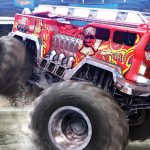
By Todd Schacherl
FURNACE CREEK
Furnace Creek, in the heart of Death Valley, is about 140 miles from the Las Vegas Strip, which is about 2 hours of driving. This makes Las Vegas a great base camp for exploring Death Valley. There are a few different routes to get there, but most people will take NV-160 to Pahrump and then to Death Valley Junction. From there, just take CA-190 into Death Valley.
The best time to visit Death Valley is between late October and April as the temperatures otherwise are just insane. If bagging a record-breaking temperature is your thing, head directly to Furnace Creek. Just make sure that your vehicle is in tip-top shape.
DEATH VALLEY JUNCTION & AMARGOSA OPERA HOUSE
Known as the gateway to Death Valley, this sports a small hotel, which has been going through renovations, as well as the Amargosa Opera House built by Marta Becket in 1967. It’s well worth 20-30 minutes of walking around and exploring this beacon of culture in the desert.
DANTE’S PEAK
This is a short detour from CA-190, about 13 miles each way, and goes to an overlook that is directly over Badwater Basin. From this vantage point, one can see much of Death Valley. Look across the valley and one can find Telescope Peak, the highest peak in Death Valley at just over 11,000 feet. Beyond that on a good clear day, Mount Whitney in California at 14,005 feet is visible.
ZABRISKIE POINT
This is a turnoff parking area where one can get a close-up view from above of Golden Canyon, Gower Gulch and Manly Beacon. It’s a great place to view the beauty and desolation of Death Valley.
GOLDEN CANYON AND GOWERS GULCH
The parking lot for this trailhead is small, so get there early. This is most often hiked as a loop hike that can include Zabriskie Point. The hike goes by the Red Cathedral and Manly Beacon, as well as Golden Canyon and Gowers Gulch. This hike can be anywhere from just over 4 miles out and back to Red Cathedral or as much as 7 miles if doing the full loop and hiking to Zabriskie Point.
MARS HILL
At the entrance to Artist’s Pallet across the street is the lowest named high point in Death Valley. It’s called Mars Hill, and with 18 feet of prominence and a top elevation of -194 feet, it’s one of the easiest high points ever. It only takes about 20 minutes to hike to the top and back This hill was used by NASA to test rovers for Mars.
ARTIST’S PALLET
This is a one-way loop that goes to one of the most colorful areas in Death Valley. Give yourself at least an hour if you are driving and 2 to 3 hours if planning on doing any hiking.
BADWATER BASIN
No trip to Death Valley is complete without stopping at Badwater Basin, the lowest point in North America at -282 feet below sea level. The salt-covered boardwalk provides a great view of the basin. However, one can walk out onto the salt flat to get an amazing view of the basin. Until recently, this was Lake Manly; however, all the water has since evaporated.
NATURAL BRIDGE
This is another easy hike and only about 1 mile out and back from the trailhead to the bridge and back. Once at the “bridge,” one can keep hiking up the wash or turn around.
FURNACE CREEK VISITOR CENTER
This is where the famous thermometer that everyone sees on the news is located. The visitor center has a museum, gift store and plenty of rangers to help people plan a safe visit in Death Valley.
THE RANCH AT DEATH VALLEY
The Ranch at Death Valley has been welcoming visitors since 1933. They have recently done quite a few upgrades, adding a new ice cream shop, bungalows and refurbished rooms. They have an 18-hole golf course and a spring-fed pool. It’s a great place to stop and get something to eat.
THE OASIS AT DEATH VALLEY
This a great final stop when visiting Death Valley. From the “secret tunnel” to the amazing gardens, it’s a mustsee on any trip into Death Valley.
RESOURCES
National Park Service: NPS.gov/deva/
Amargosa Opera House: AmargosaOperaHouse.org
Farabee’s Jeep Rentals: FarabeeJeeps.com
The Oasis at Death Valley: OasisAtDeathValley.com




